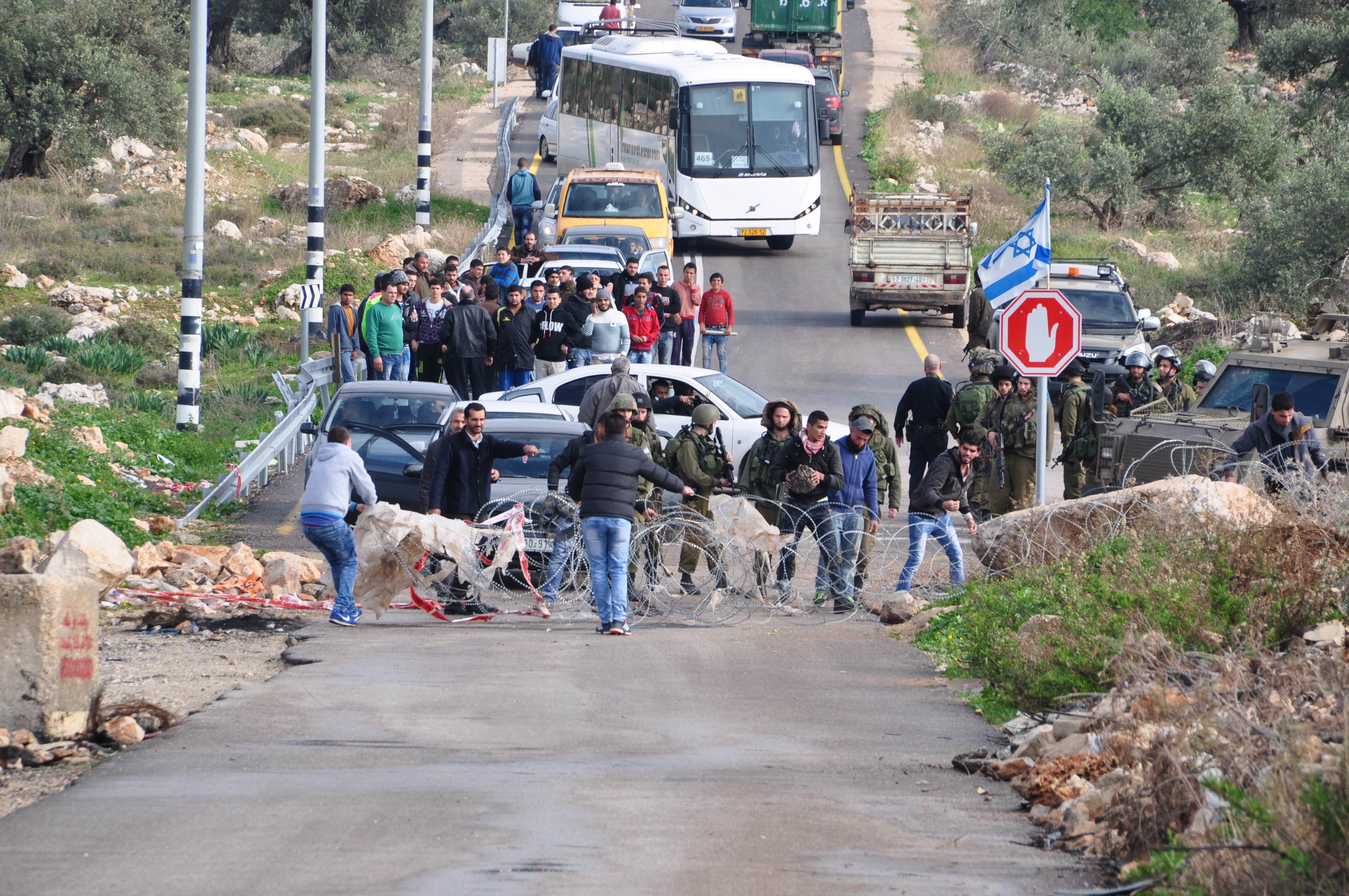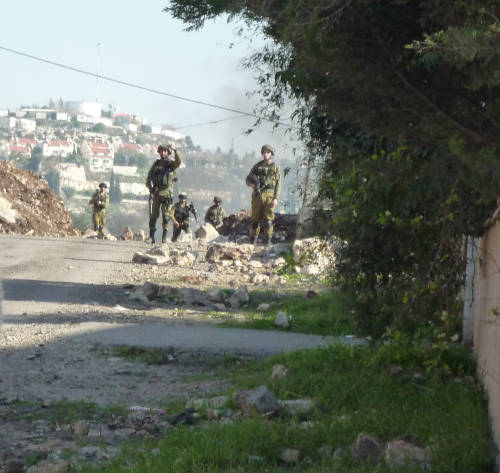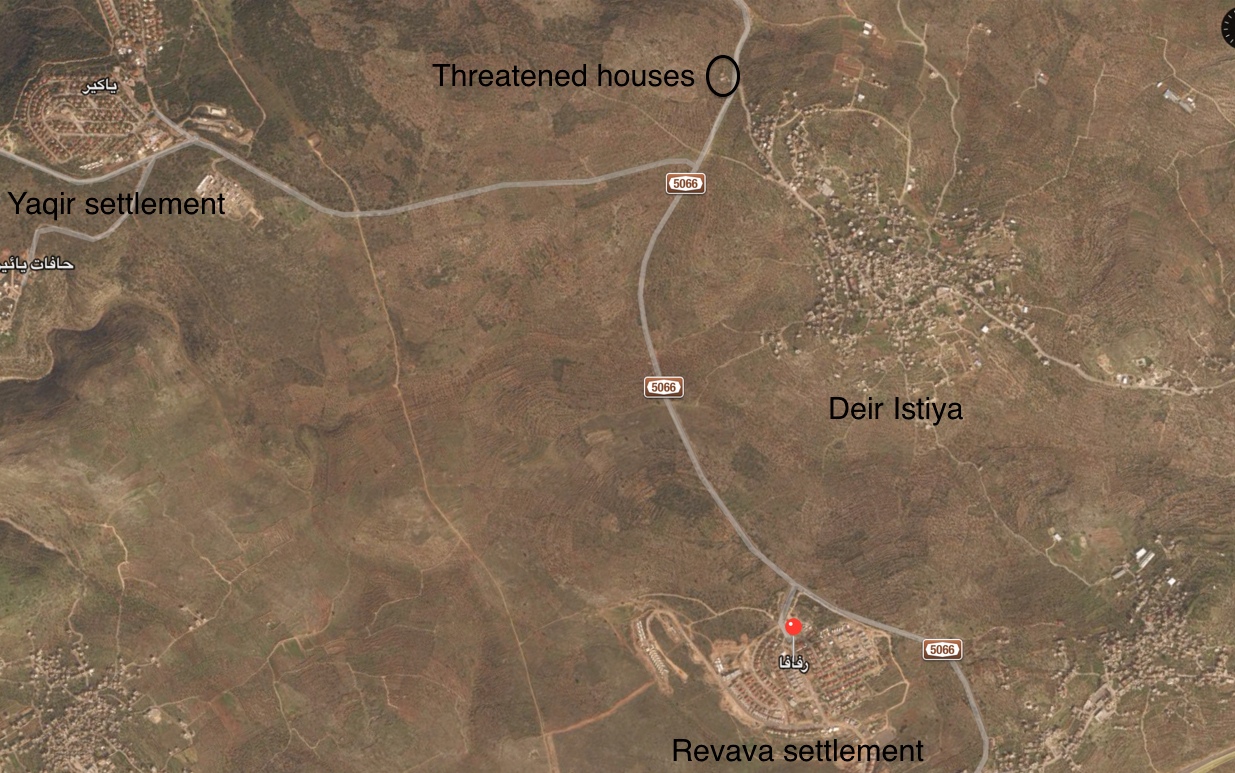Tag: Settlers
-
Palestinians remove roadblock restricting movements of villagers near Tulkarm
December 18th, 2015 | International Solidarity Movement, Tulkarm team | Shufa, occupied Palestine UPDATE 22nd December: After the removal of the road block during last weeks demonstration in Shufa village, Israeli forces told villagers that they will keep the road open in the future. But since then the road has remained closed almost every day,…
-
4 protesters shot in Kafr Qaddum demonstration
December 11th, 2015 | International Solidarity Movement, Tulkarm team | Kafr Qaddum, occupied Palestine Friday, December 11th, in Kafr Qaddum, the Israeli occupation forces shot three young men in the legs with tutu, and a fourth youth was injured with a rubber coated steel bullet at a demonstration protesting the road closure. Two illegal Israeli…
-
Israeli forces invade homes and threaten families with nine children in Deir Istyia
November 30th, 2015 | International Solidarity Movement with IWPS, Huwwara team | Deir Istyia, occupied Palestine Deir Istyia, in Salfit district, is a village of 4000 inhabitants who mostly live on agriculture. The Salfit district has 19 villages and 24 settlements. Land confiscation is ongoing in the area and many of the settlements are…



